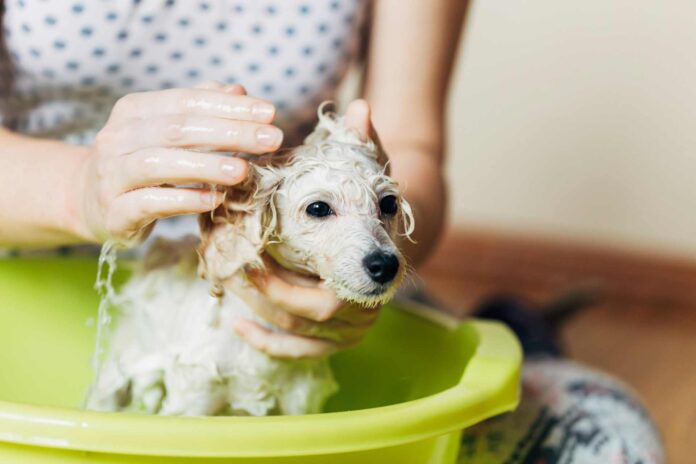Understanding Dog Grooming. In this comprehensive guide to the grooming needs of different dog breeds, we look at the importance of grooming for a dog’s health and well-being, specific grooming requirements for various coat types, recommended grooming tools and techniques, the significance of professional grooming, common grooming mistakes to avoid, and tips for grooming at home.
Introduction to Dog Grooming Needs
Proper grooming is a cornerstone of pet care that goes beyond the superficial aspects of keeping your dog aesthetically pleasing. It plays a critical role in ensuring the overall health and well-being of your furry friend. Regular grooming sessions help in the early detection of skin issues, the distribution of natural oils across the coat, and the prevention of matting, which if ignored, can result in discomfort and potential skin infections.
Moreover, the act of grooming can act as a soothing experience for your dog, reducing anxiety and promoting a sense of safety and trust. This not only aids in maintaining physical health but also supports their emotional and psychological well-being.
The benefits of regular grooming extend to the relationship between dogs and their owners. These sessions provide a unique opportunity to deepen the bond shared, turning a routine chore into an enjoyable interaction filled with mutual affection.
Especially for breeds with specific grooming requirements, such as daily brushing for long-haired breeds or careful maintenance of skin folds in breeds like Bulldogs, these moments of care reinforce trust and companionship. Neglecting these important grooming practices not only jeopardizes the dog’s health but also misses a chance to enhance the special connection between pet and owner.
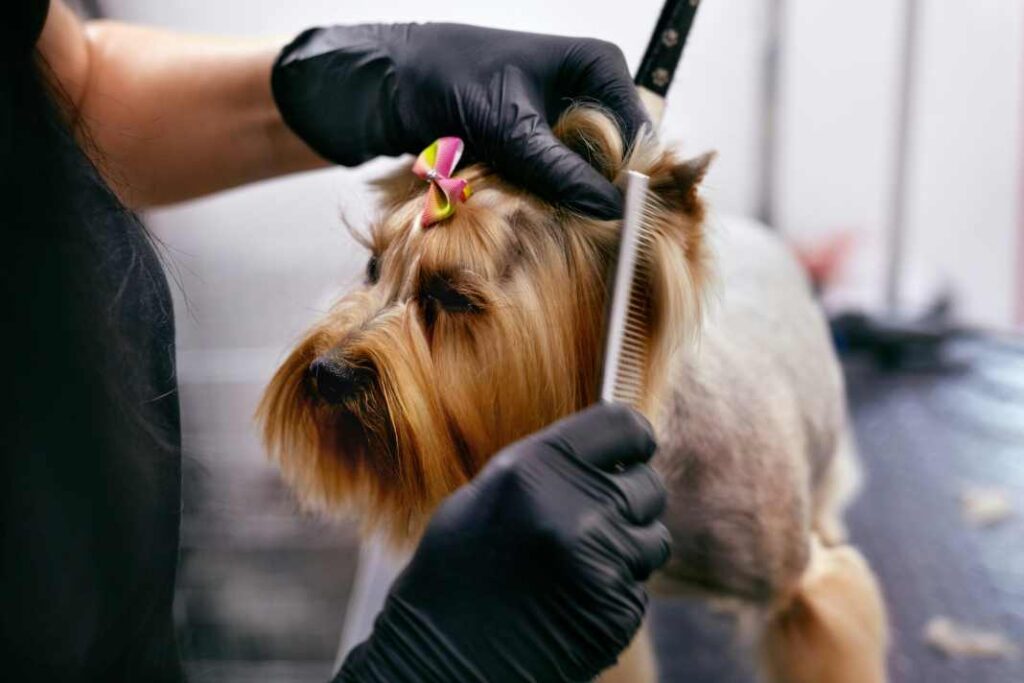
Understanding Dog Coat Types and Their Grooming Needs
Short-Haired Breeds
Short-haired breeds like Labrador Retrievers, known for their friendly and active nature, have their own grooming requirements. These dogs benefit from weekly brushing to help distribute natural oils throughout their coat, which keeps their fur healthy and reduces shedding. Boxers, another short-haired breed, not only share a similar grooming schedule but also require regular grooming to maintain a healthy coat and skin, ensuring that they remain comfortable and free from skin issues.
Long-Haired Breeds
Long-haired breeds such as Shih Tzus require daily brushing to prevent mats and tangles that can lead to discomfort and even skin infections. The same goes for other long-haired breeds like Maltese and Yorkshire Terriers. On the other hand, breeds with curly coats like Bichon Frises and Portuguese Water Dogs need regular clipping in addition to daily combing to keep their fur free of mats and to maintain overall coat health.
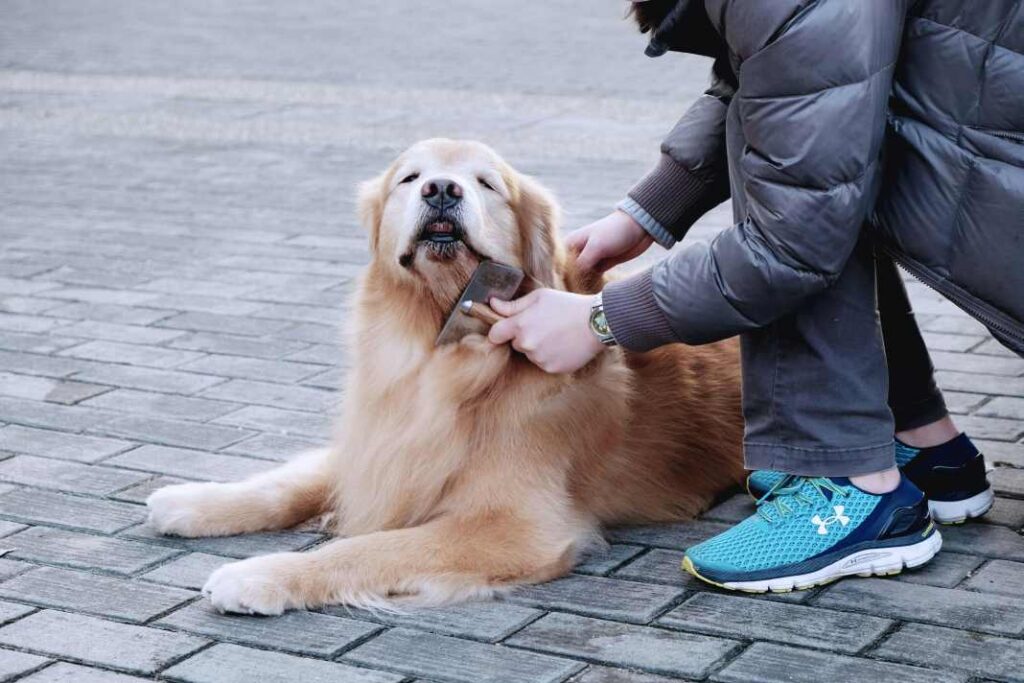
Double-Coated Breeds
Breeds with double coats, such as Golden Retrievers and Shetland Sheepdogs, need frequent brushing to manage their undercoat and prevent matting, especially during shedding seasons. Siberian Huskies, another double-coated breed, require specific seasonal care but should never be shaved. Shaving these breeds can interfere with their natural insulation, potentially causing overheating or increased cold sensitivity.
Wire-Haired Breeds
Wire-haired breeds, including Scottish Terriers and Wirehaired Dachshunds, often require hand-stripping to maintain the texture and color of their coat. This grooming technique involves removing dead hair from the outer coat, which not only keeps the coat healthy but also supports the natural growth cycle of the hair.
Curly-Coated Breeds
Curly-coated breeds like Poodles necessitate daily brushing to prevent tangles and matting. Regular haircuts are also a must to maintain their coat’s health and appearance. Using a slicker brush and comb for daily grooming helps ensure that the curls remain free of mats, contributing to the dog’s comfort and well-being.
Grooming Tools and Techniques
Understanding and utilizing the correct grooming tools and techniques is vital for the health and appearance of a dog’s coat. Different breeds have unique requirements based on their coat types, which necessitates a variety of grooming tools.
For instance, short-haired breeds such as Boxers thrive with regular use of a soft-bristled brush that helps remove loose fur and distribute skin oils, promoting a healthy shine. On the other hand, breeds with a more complex coat, like the double-coated Siberian Huskies, benefit significantly from deshedding tools.
These tools are designed to reach through the topcoat and gently remove loose undercoat fur without damaging the skin or the topcoat, effectively reducing shedding and maintaining the coat’s natural insulation properties.
Moreover, grooming techniques play a crucial role in a dog’s coat and skin health. For curly-coated breeds such as Poodles, regular clipping and combing are not just about aesthetics but are essential to prevent painful matting and tangling of their dense fur. The use of a slicker brush followed by a comb can help detangle the fur before it mats, making the grooming session a more pleasant experience for both the dog and the groomer.
In addition to preventing matting, regular grooming sessions offer an excellent opportunity to check for any signs of skin issues or health concerns, such as lumps, bumps, or parasites, that may otherwise go unnoticed. This proactive approach to pet care can lead to early detection and treatment of potential health problems, underscoring the importance of grooming not just for appearance, but for overall well-being.
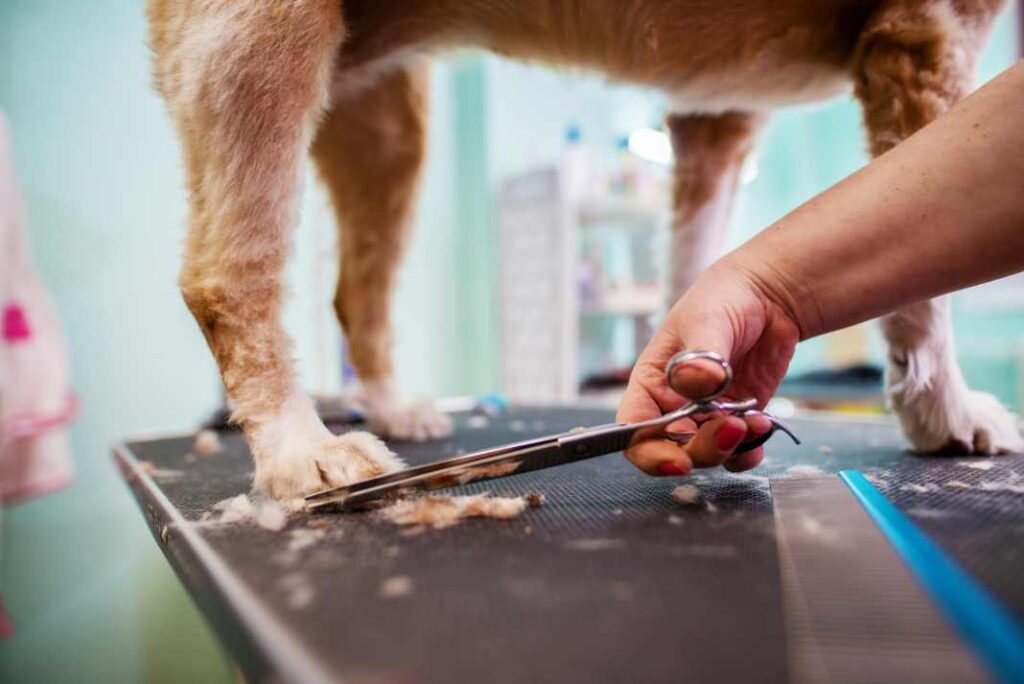
Professional Grooming and Its Significance
Professional groomers are indispensable in the world of pet care, especially when it comes to addressing the diverse grooming needs of various dog breeds. With their extensive training and expertise, these professionals are adept at handling everything from the thick, fluffy coat of a Siberian Husky to the delicate, curly fur of a Poodle.
They understand that each breed comes with its unique set of challenges and requirements—for instance, the necessity of avoiding shaving for double-coated breeds to protect their natural insulation and skin health. Through their tailored grooming services, professional groomers not only ensure that a dog’s coat looks aesthetically pleasing but also contributes significantly to its overall health and comfort.
Moreover, professional groomers serve as a valuable resource for pet owners, offering guidance on maintaining their dog’s coat between professional sessions and recommending the most suitable grooming products. Their insights can help prevent common grooming mistakes, such as using the wrong type of brush, which may lead to discomfort or even injury.
For breeds with specific needs, like the regular cleaning of skin folds in Bulldogs and Pugs to prevent infections, groomers can demonstrate techniques and provide tips to owners, ensuring that the dogs receive the best care possible. Ultimately, the relationship between a professional groomer, a dog, and its owner is a partnership aimed at preserving the well-being and happiness of the pet.
Common Grooming Mistakes to Avoid
One of the most common grooming mistakes is neglecting the regular grooming schedule, especially for breeds with specific needs. For instance, long-haired breeds like the Shih Tzu require daily brushing to prevent mats and tangles that can cause discomfort and even pain. Neglecting this essential care can lead to severe matting, requiring professional intervention to resolve. Such negligence not only causes distress for the dog but can also lead to skin infections and other health issues due to trapped moisture and bacteria under the mats.
Another critical mistake is using the wrong grooming tools or techniques. For example, using a brush designed for a short-haired dog on a curly-coated breed like the Poodle can be ineffective and even harmful. Curly coats require specific types of brushes to effectively detangle without damaging the hair.
Similarly, shaving a double-coated breed like the Siberian Husky can disrupt the natural insulating properties of their coat, making them susceptible to overheating in summer and too cold in winter. Understanding the unique grooming requirements of each breed and selecting the appropriate tools and techniques is crucial to maintaining a healthy, comfortable coat and preventing inadvertent harm.
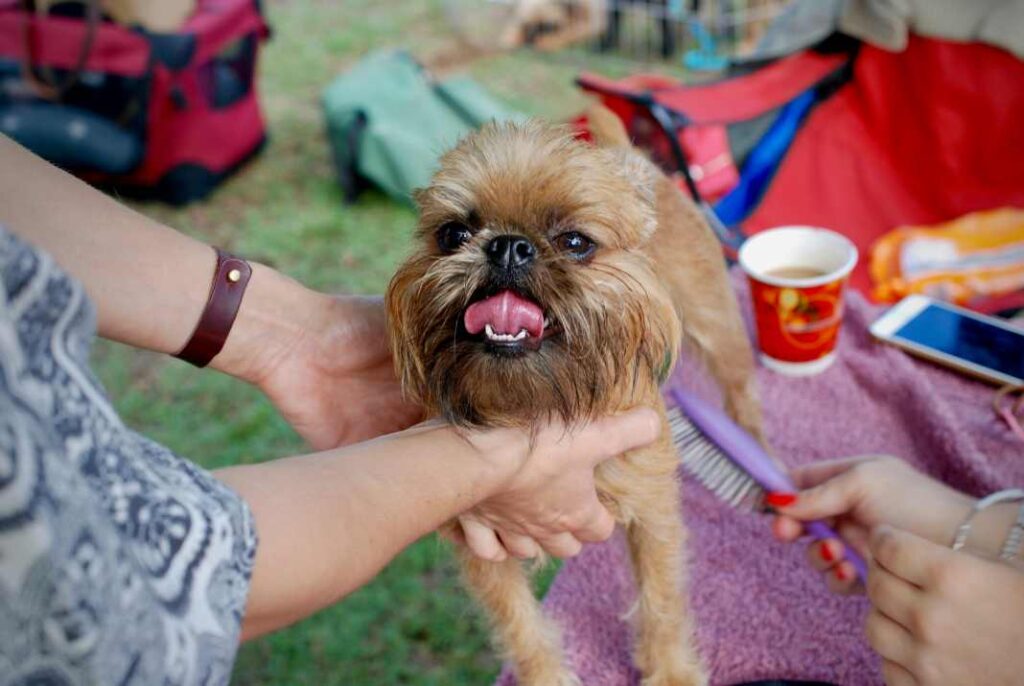
Tips for Grooming at Home
Grooming your dog at home can be a rewarding experience that not only ensures your pet’s coat and skin are healthy but also strengthens the bond between you and your furry companion. To start, it’s crucial to establish a grooming routine that caters to the unique needs of your dog’s breed and coat type.
For example, short-haired breeds like Boxers may only require weekly brushing to remove loose hair and distribute oils, while long-haired breeds like Shih Tzus might need daily brushing to prevent painful mats and tangles. Recognizing and adapting to these distinct requirements is the key to effective grooming.
In addition to choosing the right schedule, incorporating positive reinforcement during grooming sessions can transform what might be a stressful experience for your dog into a pleasant one. Treats, gentle petting, and verbal praise can help your dog associate grooming with positive feelings, making them more cooperative each time.
Furthermore, selecting the appropriate grooming products and tools is vital. Whether it’s a soft-bristled brush for sensitive skin or a special shampoo for dogs prone to skin irritations, using the right supplies can significantly enhance the grooming process. By combining these strategies, you not only ensure your dog’s coat and skin remain in excellent condition but also nurture a deeper connection through these shared moments of care.
Conclusion on Understanding Dog Grooming
The diverse world of dog grooming underscores the unique needs and care requirements that vary significantly from one breed to another. As dog owners, it’s imperative to acknowledge the importance of regular grooming, not only for maintaining the aesthetic appeal of our beloved pets but also for ensuring their physical health and emotional well-being.
Breeds with long coats, such as the Maltese, demand daily brushing to prevent painful matting, while those with specific skin conditions, like Bulldogs, require special attention to their folds to avoid infections. This highlights how grooming transcends mere beauty routines, serving as a vital component of a dog’s overall care regimen.
Embracing the grooming process, whether performed at home or by a professional, fosters a deeper bond between dogs and their owners. It’s an opportunity to check on the pet’s health, identifying any issues like lumps, parasites, or skin problems early on.
Furthermore, engaging in regular grooming sessions establishes a routine that dogs can find comforting, reinforcing the trust and connection with their human caregivers. Thus, by prioritizing and tailoring grooming practices to fit the specific needs of different dog breeds, owners can significantly contribute to their pets’ quality of life, ensuring they remain happy, healthy, and well-groomed companions.
Related Article:
Grooming Guide for Canine Wellness: Understanding Coat Types, Skin Issues, and Happiness Boosters



